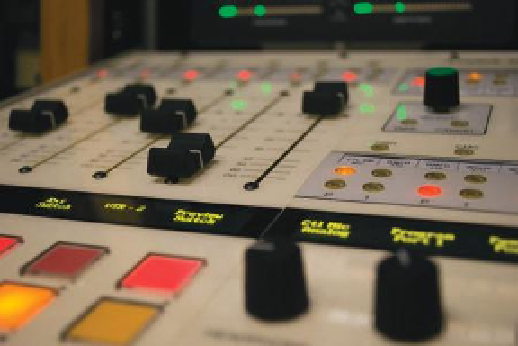Game Development Reference
In-Depth Information
AUDIO MIDDLEWARE LETS YOU. . .
Dei ne Audio Behaviors
Develop basic sound functions like when, where, and how loud a sound plays along with its behavior
in the game. There are also lines of code that let you do cool things, like randomize sounds in the game
environment (good for obtaining a more realistic or organic sound). It also allows you to prioritize sounds
and create basic audio building blocks using reusable sounds, saving memory and time.
Create Dynamic Game-Driven Musical Scores
Middleware aids in the creation of sophisticated branching and looping structures so that music can be
as interactive as the gameplay, or it can tie the music to dif ering game states, such as the health of the
player. Non-linear music composition allows you to create music that responds dynamically to game
events and musical transitions that may be as subtle as a key change or as dramatic as moving from one
musical genre to another.
Mix and Master the Game Audio in Real Time
Many engines can connect to and mix your game live and provide mixers and snapshots, allowing the
designer to tweak levels, ef ects, and properties for all game sounds while playing the game. These are
virtual mixers that allow the audio design to change quickly, easily and ei ciently (we hope) on the l y.
This includes things like Reverb, EQ, delay ef ects, pitch shifting, normalization, dimensional panning and
re-combination of sounds. This type of logic-based mixing allows the designer to create multiple libraries
of sound that are chosen to play in the game based on a set of logical rules so the audio environment
does not get stale with repeated listening as it is changing all the time in dif erent ways.
Among other features, audio middleware allows you to create and coni gure
real-time audio mixing in your game.
Credit:
Laf y4K (Flickr).

































